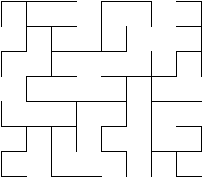0708-1300/Homework Assignment 10: Difference between revisions
No edit summary |
No edit summary |
||
| Line 4: | Line 4: | ||
==Reading== |
==Reading== |
||
Read, reread and rereread your notes to this point, and make sure that you really, really really, really really really understand everything in them. Do the same every week! |
Read, reread and rereread your notes to this point, and make sure that you really, really really, really really really understand everything in them. Do the same every week! |
||
Also, read section 1 through 6 (to page 183) of chapter IV of Bredon's book three times: |
|||
* First time as if you were reading a novel - quickly and without too much attention to detail, just to learn what the main keywords and concepts and goals are. |
|||
* Second time like you were studying for an exam on the subject - slowly and not skipping anything, verifying every little detail. |
|||
* And then a third time, again at a quicker pace, to remind yourself of the bigger picture all those little details are there to paint. |
|||
==Doing== |
==Doing== |
||
Solve the following problems from Bredon's book, but submit only the solutions of the problems marked with an "S": |
|||
{|align=center border=1 cellspacing=0 cellpadding=5 |
|||
|- align=center |
|||
!problems |
|||
!on page(s) |
|||
|- align=center |
|||
|1, 2, S3 |
|||
|176-177 |
|||
|- align=center |
|||
|S2, 3 |
|||
|182 |
|||
|- align=center |
|||
|S5 |
|||
|190 |
|||
|} |
|||
Also, solve and submit the following question: |
|||
'''Problem 6.''' "Homotopies between maps" define an "ideal" within the category of topological spaces and continuous maps between them: the homotopy relation is an equivalence relation, and if <math>f_1\sim f_2</math>, then <math>f_1\circ g\sim f_2\circ g</math> and <math>g\circ f_1\sim g\circ f_2</math> whenever these compositions make sense. Show that the same is true for the notion "homotopy of chain maps between chain complexes", within the category of chain complexes and chain maps between them. |
|||
==Due Date== |
==Due Date== |
||
| Line 11: | Line 35: | ||
==Just for Fun== |
==Just for Fun== |
||
[[Image:0708-1300-MaximalTree.png|frame|left|A maximal tree in the 9x9 integer lattice.]] |
|||
A maximal tree is chosen within the edges of the <math>n\times n</math> integer lattice. Show that there are two neigboring points on the lattice whose distance from each other, measured only along the tree, is at least <math>n</math>. |
|||
Revision as of 12:38, 28 February 2008
| ||||||||||||||||||||||||||||||||||||||||||||||||||||||||||||||||||||||||||||||||||||||||||||||||||||||||||||
The information below is preliminary and cannot be trusted! (v)
Reading
Read, reread and rereread your notes to this point, and make sure that you really, really really, really really really understand everything in them. Do the same every week!
Also, read section 1 through 6 (to page 183) of chapter IV of Bredon's book three times:
- First time as if you were reading a novel - quickly and without too much attention to detail, just to learn what the main keywords and concepts and goals are.
- Second time like you were studying for an exam on the subject - slowly and not skipping anything, verifying every little detail.
- And then a third time, again at a quicker pace, to remind yourself of the bigger picture all those little details are there to paint.
Doing
Solve the following problems from Bredon's book, but submit only the solutions of the problems marked with an "S":
| problems | on page(s) |
|---|---|
| 1, 2, S3 | 176-177 |
| S2, 3 | 182 |
| S5 | 190 |
Also, solve and submit the following question:
Problem 6. "Homotopies between maps" define an "ideal" within the category of topological spaces and continuous maps between them: the homotopy relation is an equivalence relation, and if Failed to parse (SVG (MathML can be enabled via browser plugin): Invalid response ("Math extension cannot connect to Restbase.") from server "https://wikimedia.org/api/rest_v1/":): {\displaystyle f_1\sim f_2} , then and whenever these compositions make sense. Show that the same is true for the notion "homotopy of chain maps between chain complexes", within the category of chain complexes and chain maps between them.
Due Date
This assignment is due in class on Thursday March 13, 2008.
Just for Fun
A maximal tree is chosen within the edges of the integer lattice. Show that there are two neigboring points on the lattice whose distance from each other, measured only along the tree, is at least Failed to parse (SVG (MathML can be enabled via browser plugin): Invalid response ("Math extension cannot connect to Restbase.") from server "https://wikimedia.org/api/rest_v1/":): {\displaystyle n} .




